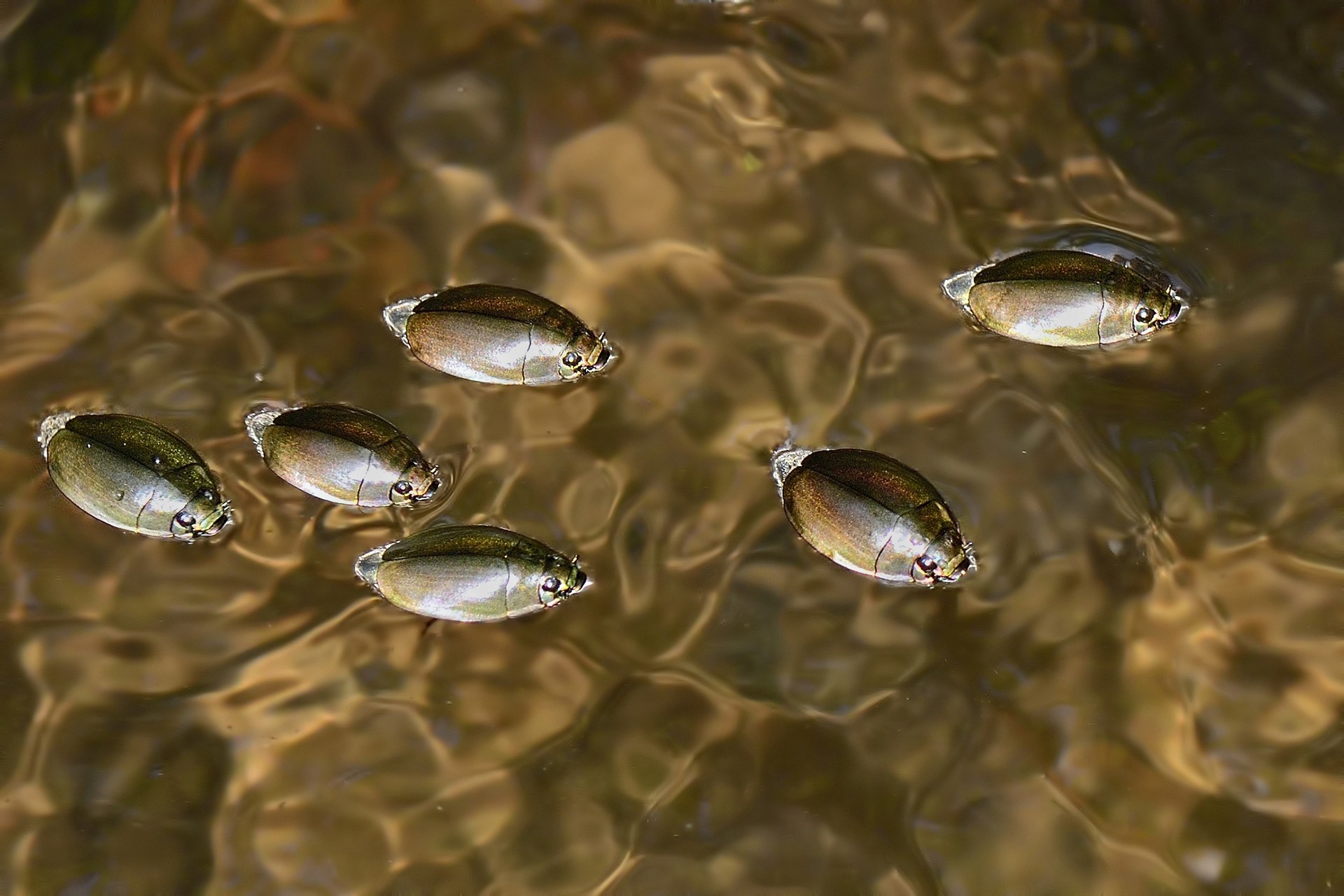I witnessed a special natural history moment while on a trip to Coorg. I spotted what I thought was a school of fish in a stream. However, the ‘fish’ seemed to be swimming on the water’s surface, with the upper half of their bodies outside, unlike most others of their kind. When I looked closer, I realised these weren’t fish at all, but insects; more specifically, beetles.
The Whirligig Beetles get their name from the way they whirl around rapidly in circles when threatened, as if caught in a whirlpool.
They belong to the Gyrinidae family of water beetles and are usually black in colour, sometimes greyish-green. They have wings like most other beetles and thus are capable of flying. But they prefer the water.
They have a well-lubricated outer layer, hind legs modified to aid swimming and a pair of split eyes, enabling them to see both above and below the surface of the water at the same time — all of which lets them adapt easily to their marine lifestyle. The adults are capable of carrying an air bubble beneath their elytra that helps them breathe underwater as well.
Whirligig Beetles live and move around in large groups, their social nature providing the additional benefit of evading predators.
According to A Concise Field Guide To Indian Insects And Arachnids by Meenakshi Venkataraman, "both larvae and adults are predaceous and sometimes prey on organisms larger than their size". They feed on the debris that floats on the water and also on other insects or small invertebrates that might fall in. When they detect waves from a struggling insect in the water, they spin around rapidly, sending ripples across the water’s surface. These ripples bounce back from the intended victim. The beetles detect the echo and triangulate the location of their prey.
Whirligig Beetles might be small, but they are very beneficial for the water body they inhabit — as scavengers they help in cleaning the water of dead and decaying matter.


